How to Choose Your Perfect Scuba Fins
Scuba fins are an essential piece of scuba gear and are part of the ABC basic diving equipment you should own as a PADI Divemaster. Unsure on what the ABC basic diving equipment is? Check out our blog: What Diving Equipment Should I Own as a PADI Divemaster? to find out.
Fins consist of a foot pocket that secures your foot to a large blade. They are like an extension to your feet that give resistance for pushing against the water and propulsion (forward momentum) when kicking. Therefore, they amplify your kicks making them ‘stronger’ so that you can move longer distances underwater with less effort.
Choosing the right pair of fins is important, firstly so they fit correctly to the size and shape of your feet but also so they fully suit your diving needs. Also of course your style and colour as a great identification marker for your underwater peers. In addition, it might sound obvious but make sure that you buy fins that are designed for scuba diving. There are many fins available on the market for a range of water sports like fins for swimming, free diving, snorkelling or body surfing so keep this in mind. In this post, we have listed some important things to consider when buying your own fins so you can choose the perfect pair for you.
Open Heeled Fins vs. Full Foot Fins
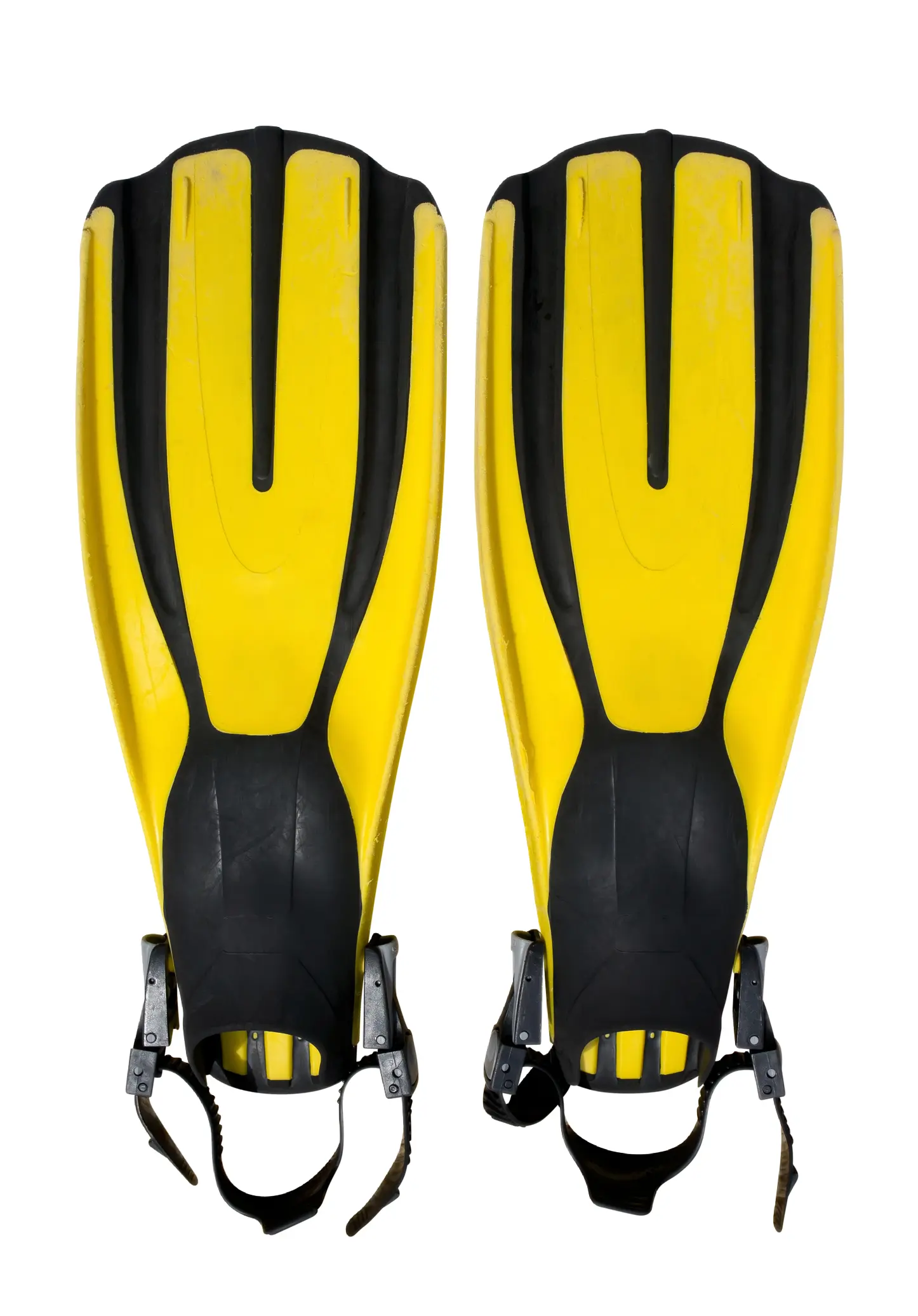
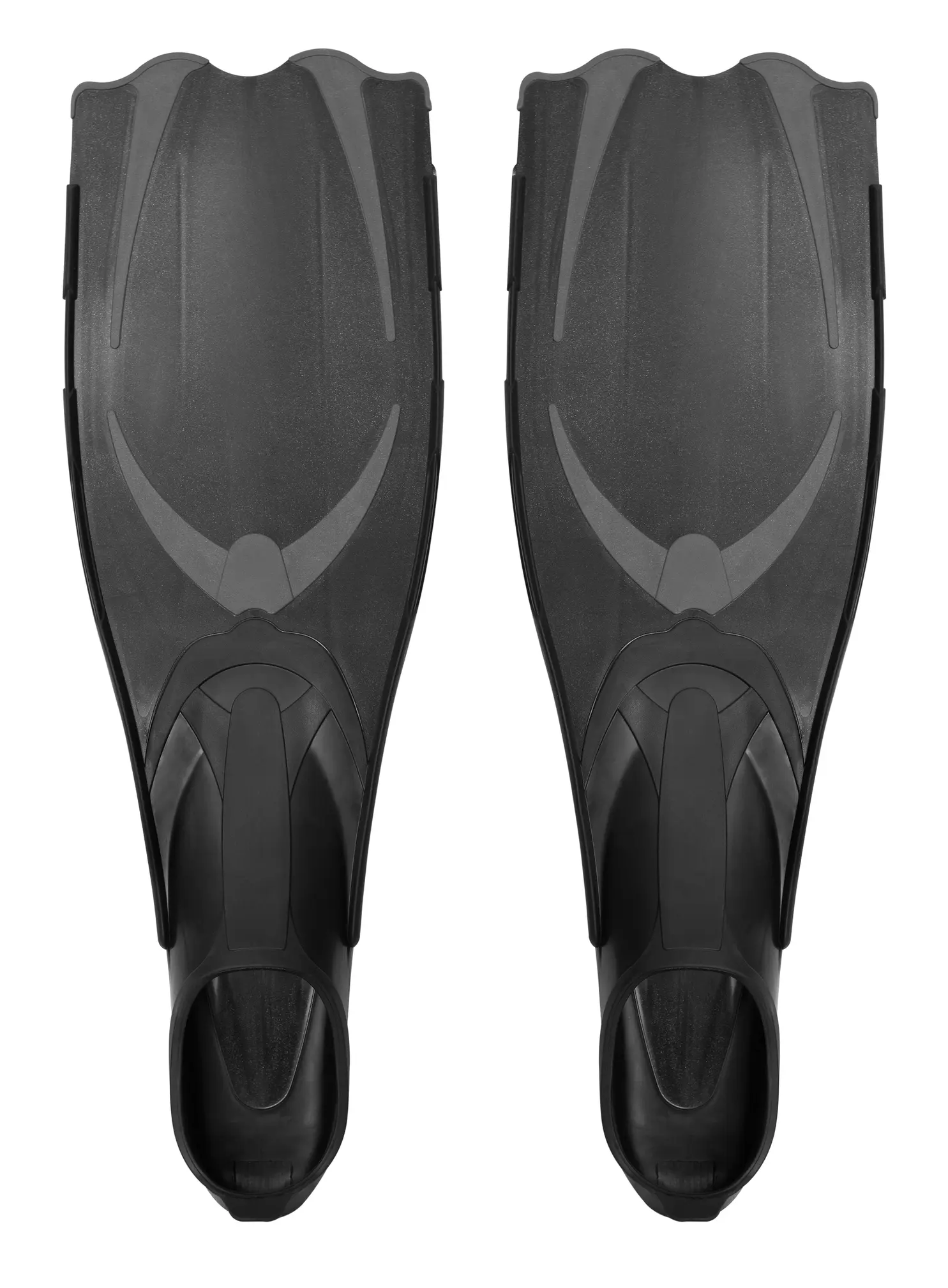
There are two main styles of fins, open-heel adjustable fins and full foot fins. Open-heel adjustable fins are the preferred choice for recreational and tec diving. They are generally larger and better at propelling you through water with scuba on. Full foot fins have foot pockets that are a bit like slippers that you can quickly slide into. These are worn barefoot and are only recommended for use in calm tropical warm climates where you are primarily diving from a boat.
Open heel fins are more commonly used and can be used in all climates. Unlike full-foot fins, these fins have a heel strap that secures your foot into the foot pocket. There are different types of heel straps to choose from, giving you more options to find the one that suits you best (more about this in ‘Fins features’). They also usually require booties which provide further foot protection, though some models can be used without booties.
Ensuring a Good Fit
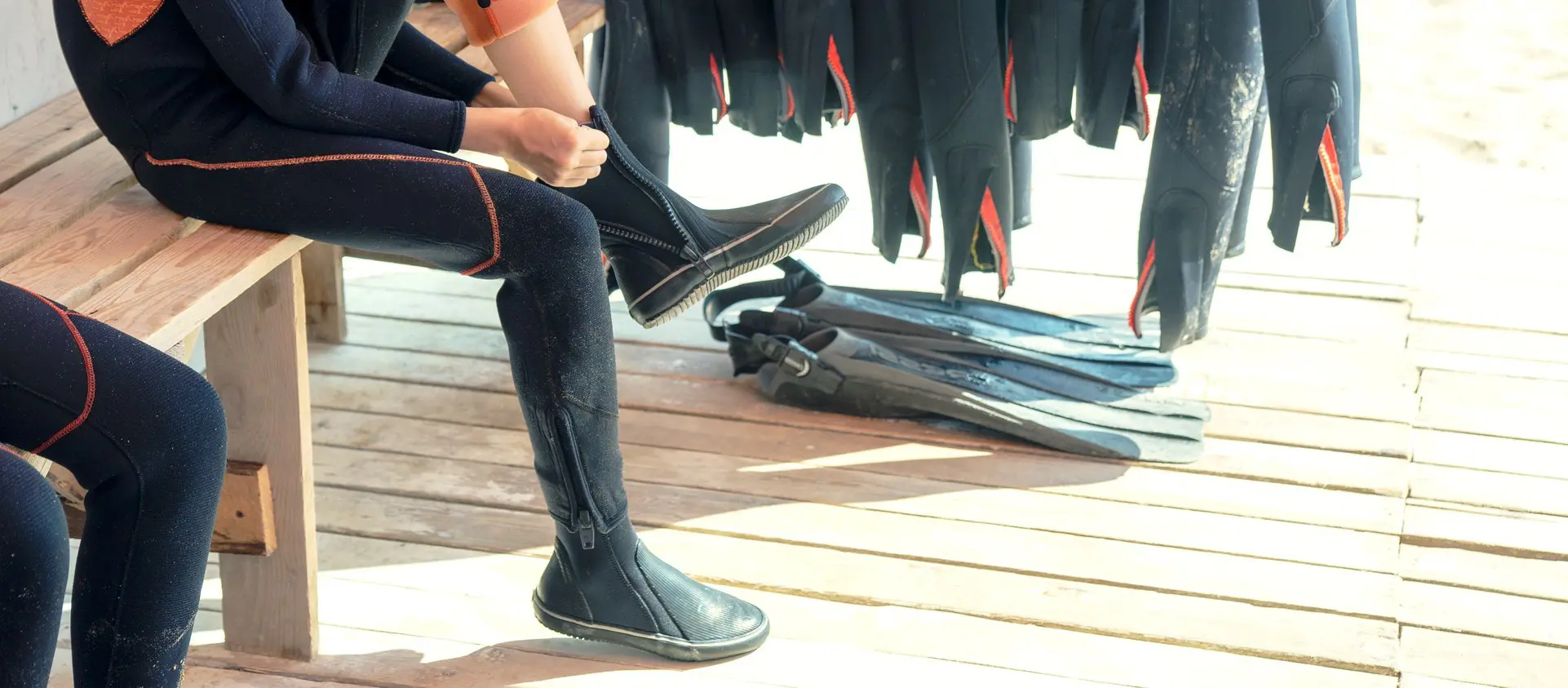
Having fins that fit well enhances both your enjoyment and experience of your dives where you won’t even notice them on. With the foot pocket, you don’t want it to be too big or loose and they’ll keep coming off and be easily lost, and too small or tight will cause noticeable discomfort and even cause friction and soreness to the skin of your feet. Therefore avoid buying fins online unless you have tried them on previously or are prepared to return and rebuy a few times.
Foot fins are sized according to universal shoe sizes. However, as with normal shoes, be aware that sizing between different brands may differ slightly.
With open-heeled fins, you’ll firstly want to know if the fins that you are trying on require booties. If they do, consider buying booties that fit well first so that you can test them with the fins. To test that they fit, secure the heel strap and check that the fins don’t pinch or wobble when wiggling your feet. Another test to check that they aren’t too small is to slide your foot all the way into the foot pocket and make sure that you can slide the strap up to your ankle. If you can’t, it’s too small.
Scuba Fins Buoyancy
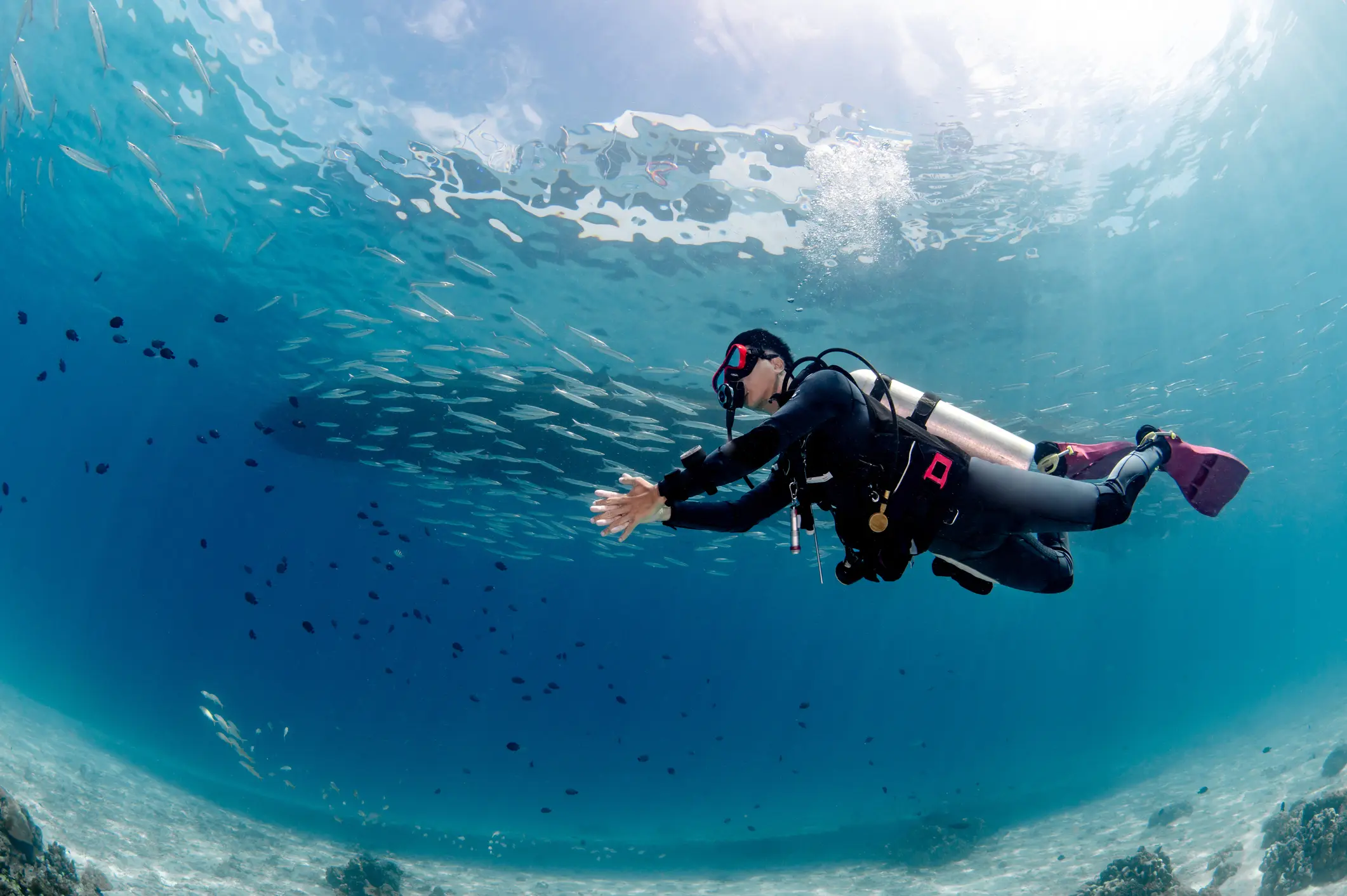
As well as this, before purchasing any scuba fins, you want to take into account how they affect your buoyancy. Getting fins that lever your overall buoyancy better will significantly improve your trim (body position in the water). This therefore makes you more horizontal and streamlined, increasing efficiency of movement underwater. When finding fins with the right buoyancy, firstly consider your body type, where you carry muscle and fat and if you would benefit with more negatively/positively buoyant fins. Also, if you will be wearing a thicker exposure suit e.g. a dry suit where heavier fins are required to compensate for the suit’s positive buoyancy. In addition, think about the size of the fin blade you’ll benefit from. Normally the length of the blade is matched to the size of the scuba fin, though here’s an idea of the size of fins in general:
As well as size, the stiffness of the blade is also important to consider to match both your power and technique of your kick. Stiffer fins require a stronger force to manoeuvre but also create less resistance and stronger propulsion in water for certain kicking techniques. These are normally recommended for divers who execute frog kicks, helicopter turns and backwards kicks in their everyday diving. Flexible fins are much easier to move and require less energy per kick to work. Flexible fins are recommended for divers who normally use a flutter kick so these types of fins are much easier to handle for beginners.
Scuba Fins Features
Scuba fins nowadays are normally constructed with composite materials. Typically, the foot pockets (and heel straps) are made of neoprene and the blade is made from a thermoplastic making them super light. Some higher end fins incorporate graphite and other fibres into the blade that improve efficiency of movement.
Below is a diagram with the features of an open-heel scuba fins:
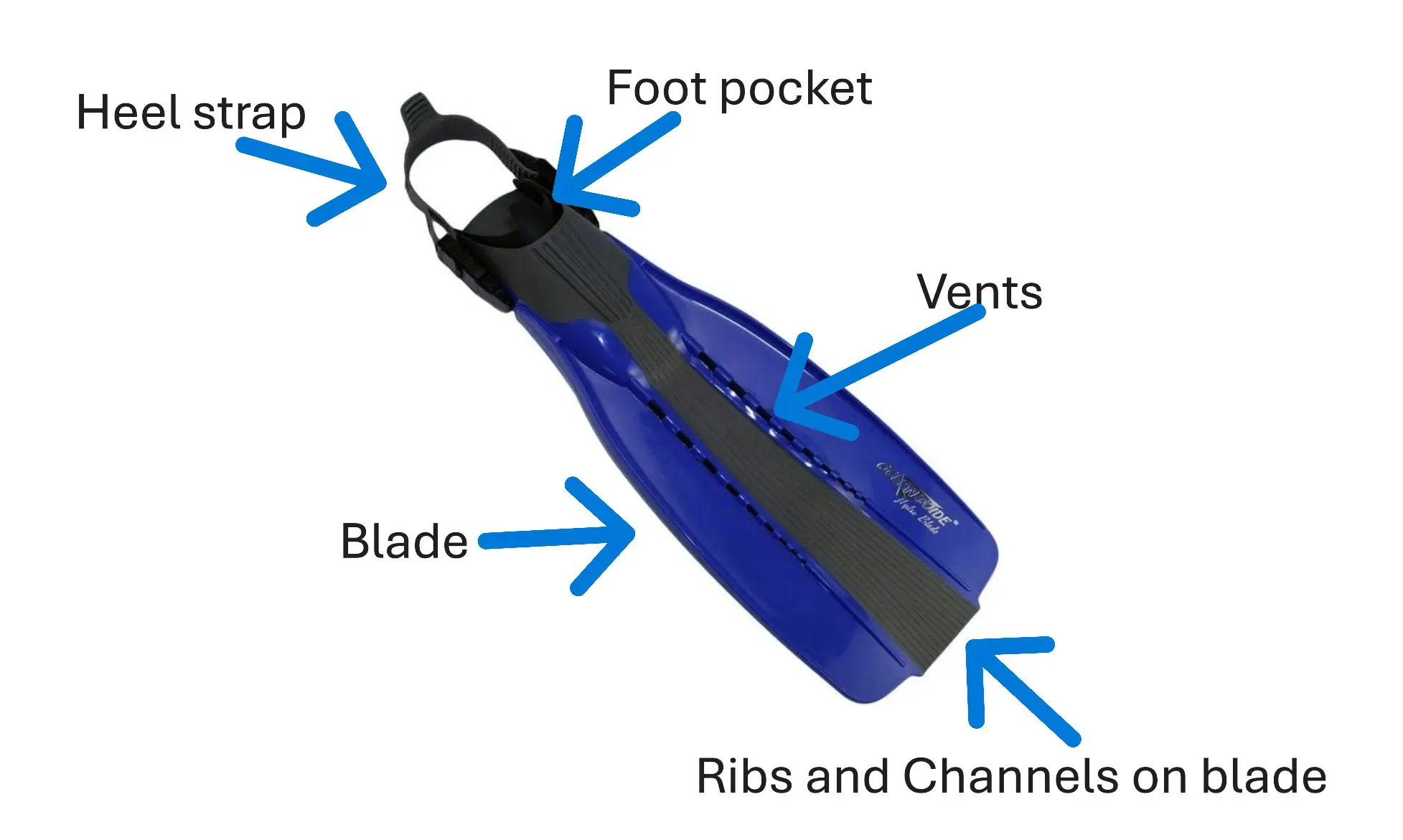
As mentioned, there are several types of heel straps out there which you can adjust to your feet. Below is a table of the typical types of heel straps out there, their pros and their cons.
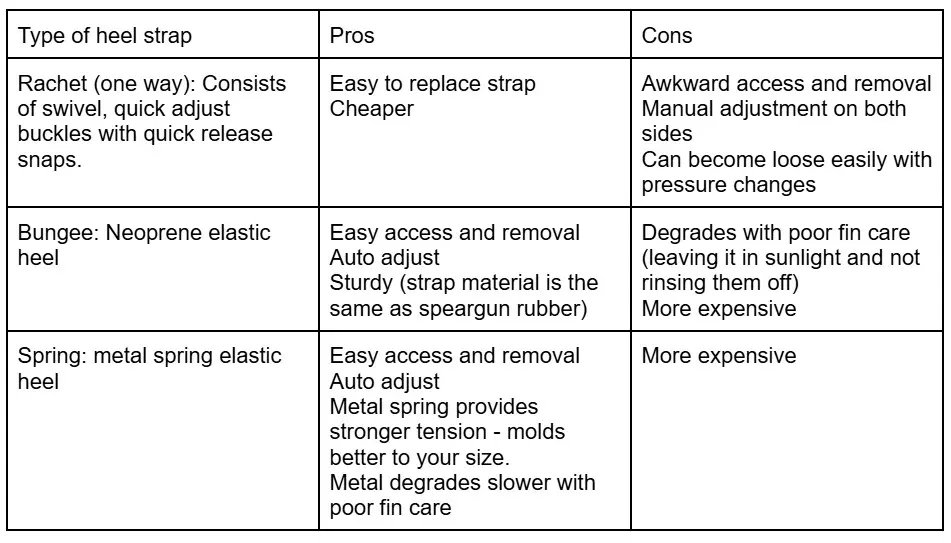
Ribs, Channels and Vents
These are features built into the blade of the fin with the following purposes:
Split Fins and Force Fins
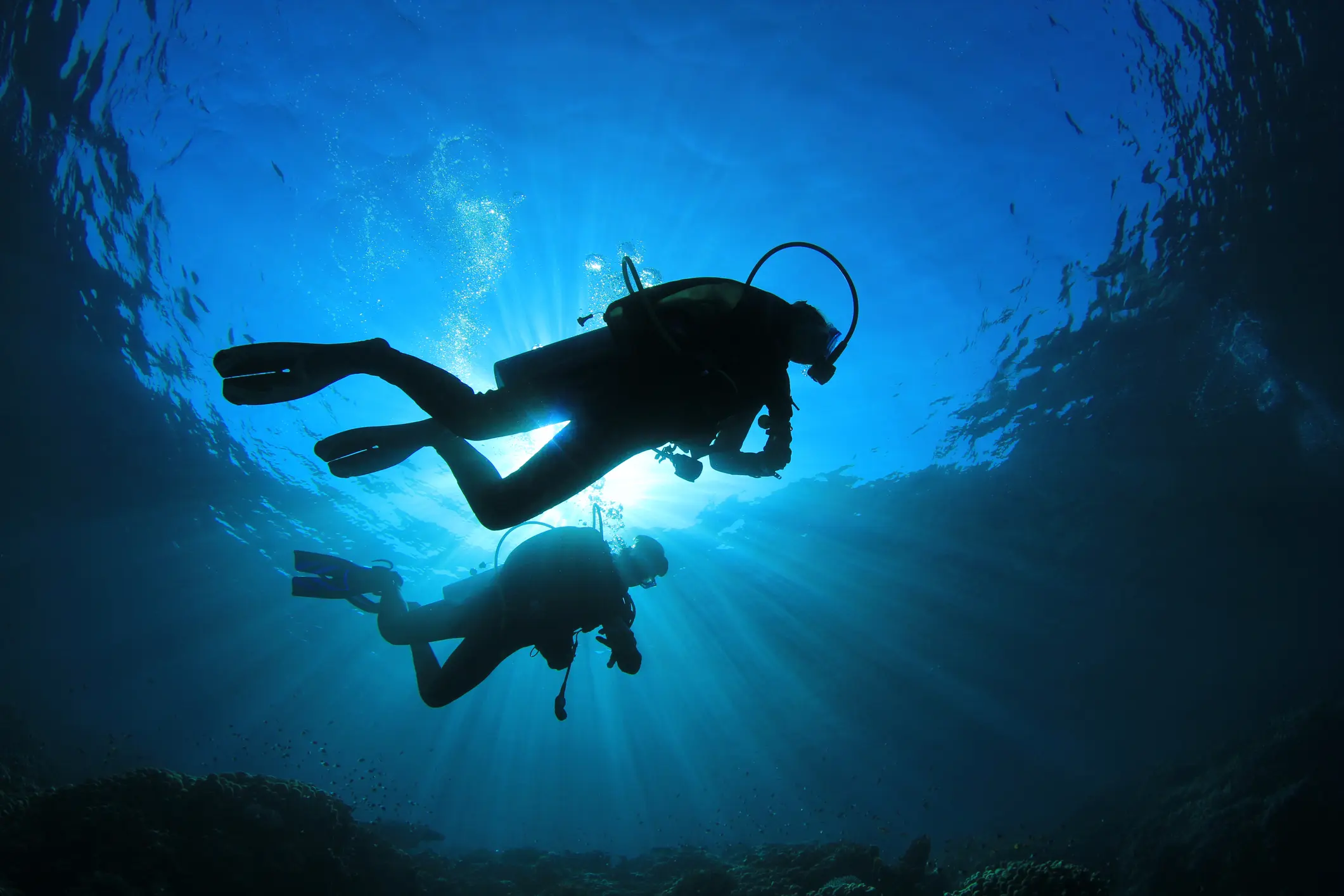
These fins have more specialised blades and emulate the natural shape of the fins of a fish. Force fins have a v-shape at the end of the blade whereas split fins have a split down the centre of the blade. The theory behind these fins is that more water is driven straight back allowing for more efficient propulsion on each kick, much like a fish or whale. Because of this, these are growing in popularity. However, this theory really only applies to flutter kicks, and unfortunately these types of fins don’t increase propulsion for frog kicks. Therefore, the standard paddle shaped blade remains popular amongst scuba divers especially cave divers and technical divers who commonly use this type of kick.




